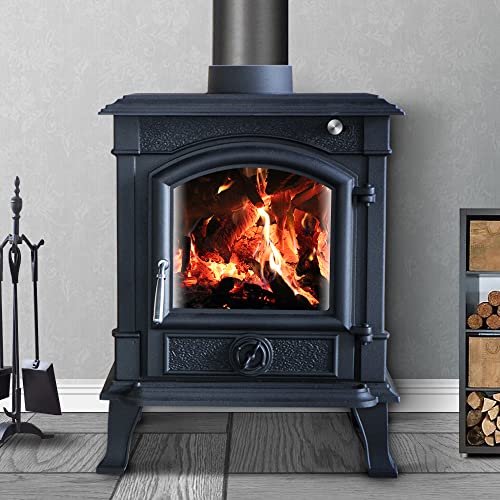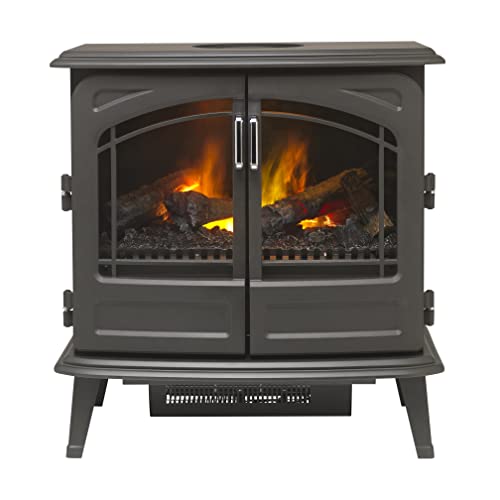Wood Burning Stoves Near Me
 Wood stoves can help you reduce your energy bills. They also assist in active woodland management, which benefits wildlife.
Wood stoves can help you reduce your energy bills. They also assist in active woodland management, which benefits wildlife.
If they are not installed and maintained correctly, they can produce carbon monoxide, which can pose health risks for the family. To prevent this, look for an EPA-certified wood stove equipped with modern technology to ensure safety.
Catalytic Stoves
A catalytic stove is outfitted with an encapsulated catalyst that converts the smoke of wood into carbon dioxide and water. It is an excellent choice for anyone who wants to reduce their indoor air pollution and save money by burning less wood. They burn more hot and produce less creosote. They use less fuel. They can be more costly to operate than non catalytic models and require regular maintenance of the combustion chamber.
Wood Stoves that have been certified by the EPA
The EPA requires that wood stoves be designed according to specific guidelines that restrict their emissions. These guidelines state that a catalytic wood stove must test at least 7.5 grams of smoke per hour. This compares with 4.1 grams per hour of smoke for a non catalytic stove. It is important to note that lower emissions ratings don't translate into more heating efficiency.
Sizing and Selection
It is essential that your wood stove is sized to fit the area in which it will be placed. A stove that is not properly sized will not work as intended and may even overheat. A properly sized stove will increase heat output while reducing emissions. The brochure: Buying an EPA-Certified Wood Stove (PDF 530K) provides a convenient method of sizing and selecting the right wood stove.
Non-Catalytical and Catalytic stoves
The first type of wood electric stove fires manufactured was the non-catalytic stove log burner. They are also referred to as traditional wood-burning stoves, or open fire stoves. The non-catalytic stove has the advantage that it does not require another combustion to lower emissions. Smoke is one of the major sources of energy waste. The smoke that is produced by a wood stove that is not catalytic has creosote, a heavy substance which is a highly toxic substance. The catalytic wood heater has eliminated the risks. The catalytic wood stove wood uses catalysts to burn off the gases in the smoke and eliminates the toxic creosote.
The catalytic wood burning device was created to reduce toxic emissions. However, it is less effective than the secondary combustion system utilized in the non-catalytic model. The catalyst does produce some harmful fumes since it doesn't burn completely the wood byproducts that result from burning. The honeycomb structure can also break down with time. This could lead to a decrease in performance and the need for replacement.
Cleaning the Combustion Chamber Clean
A catalytic combustor working properly will appear like a powdery gray. It must be free of soot, ash or other tatty substances that would plug up the cells and reduce the catalytic surface. The combustor should not be subject to flame impingement. This could occur when a strong, rapid draft draws flames directly into a catalytic convertor. This may also happen when the firebox's or ash pan's door Wood Burning Stoves Near Me has been left open.
It is important to inspect the catalytic combustion chamber regularly for physical damage or a need to replace. If the catalytic unit is damaged or requires to be replaced, it must happen as soon as possible for optimal performance.
 Wood stoves can help you reduce your energy bills. They also assist in active woodland management, which benefits wildlife.
Wood stoves can help you reduce your energy bills. They also assist in active woodland management, which benefits wildlife.If they are not installed and maintained correctly, they can produce carbon monoxide, which can pose health risks for the family. To prevent this, look for an EPA-certified wood stove equipped with modern technology to ensure safety.
Catalytic Stoves
A catalytic stove is outfitted with an encapsulated catalyst that converts the smoke of wood into carbon dioxide and water. It is an excellent choice for anyone who wants to reduce their indoor air pollution and save money by burning less wood. They burn more hot and produce less creosote. They use less fuel. They can be more costly to operate than non catalytic models and require regular maintenance of the combustion chamber.
Wood Stoves that have been certified by the EPA
The EPA requires that wood stoves be designed according to specific guidelines that restrict their emissions. These guidelines state that a catalytic wood stove must test at least 7.5 grams of smoke per hour. This compares with 4.1 grams per hour of smoke for a non catalytic stove. It is important to note that lower emissions ratings don't translate into more heating efficiency.
Sizing and Selection
It is essential that your wood stove is sized to fit the area in which it will be placed. A stove that is not properly sized will not work as intended and may even overheat. A properly sized stove will increase heat output while reducing emissions. The brochure: Buying an EPA-Certified Wood Stove (PDF 530K) provides a convenient method of sizing and selecting the right wood stove.
Non-Catalytical and Catalytic stoves
The first type of wood electric stove fires manufactured was the non-catalytic stove log burner. They are also referred to as traditional wood-burning stoves, or open fire stoves. The non-catalytic stove has the advantage that it does not require another combustion to lower emissions. Smoke is one of the major sources of energy waste. The smoke that is produced by a wood stove that is not catalytic has creosote, a heavy substance which is a highly toxic substance. The catalytic wood heater has eliminated the risks. The catalytic wood stove wood uses catalysts to burn off the gases in the smoke and eliminates the toxic creosote.
The catalytic wood burning device was created to reduce toxic emissions. However, it is less effective than the secondary combustion system utilized in the non-catalytic model. The catalyst does produce some harmful fumes since it doesn't burn completely the wood byproducts that result from burning. The honeycomb structure can also break down with time. This could lead to a decrease in performance and the need for replacement.
Cleaning the Combustion Chamber Clean
A catalytic combustor working properly will appear like a powdery gray. It must be free of soot, ash or other tatty substances that would plug up the cells and reduce the catalytic surface. The combustor should not be subject to flame impingement. This could occur when a strong, rapid draft draws flames directly into a catalytic convertor. This may also happen when the firebox's or ash pan's door Wood Burning Stoves Near Me has been left open.
It is important to inspect the catalytic combustion chamber regularly for physical damage or a need to replace. If the catalytic unit is damaged or requires to be replaced, it must happen as soon as possible for optimal performance.



